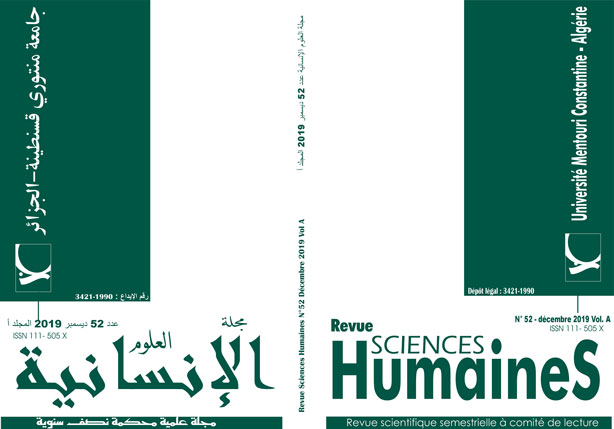Interaction Effect of Dual N-back Working Memory Training and Anxiety Levels on L2 Writing Performance
Mots-clés :
, Anxiety, interaction effect, L2 writing, workingRésumé
Burgeoning interest in the role of working memory (WM) in most cognitive endeavors has led to an increase in WM training programs. Within the field second language writing, however, WM improvement interventions are scarce, and even scarcer is research into how other variables interactwith WM in their effect on performance. Hence, this study examines how anxiety, often believed to be an impediment for both WM and writing, moderates the effect of WM training on writing. Learners’ (N=80) writing performance was assessed before and after Dual N-back training. Anxiety levels were examined for any interaction with the intervention. Results from ANCOVA, Pearson’s correlation, and Two-Way ANOVA have revealed that writing anxiety is significantly correlated with writing performance and that the treatment group outperformed the control group even after controlling for both initial performance and anxiety levels. The findings indicate that there is a significant anxiety-treatment interaction effect on writing performanceTéléchargements
Références
- Olive, T. (2012). Writing and working memory: a summary of theories and findings In E.L. Grigorenko, E. Mambrino & D.D. Preiss, Writing: A mosaic of new perspectives (pp. 125- 140). Psychology Press.
- Kellogg, R. T. (2008). Training writing skills: A cognitive development perspective. Journal of Writing Research, 1, 1–26.
- Mohamed, M., & Zouaoui, M. (2014). EFL writing hindrances and challenges: The case of second year students of English at Djillali Liabes. Journal of Educational and Social Research, 4(3), 149.
- Baddeley, A. D. (2002). Is working memory still working?. European psychologist, 7(2), 85.
- Baddeley, A. D., & Hitch, G. (1974). Working memory. In Psychology of learning and motivation (Vol. 8, pp. 47-89). Academic press.
- Baddeley, A. D. (2000). The episodic buffer: a new component of working memory?. Trends in cognitive sciences, 4(11), 417-423.
- Baddeley, A. D. (2012). Working memory: theories, models, and controversies. Annual review of psychology, 63, 1-29.
- Baddeley, A.D., Gathercole, S.E. & Papagno, C. (1998). The phonological loop as a language learning device. Psychological Review 105 (1), 158–173.
- Linck, J. A., Osthus, P., Koeth, J. T., & Bunting, M. F. (2014). Working memory and second language comprehension and production: A meta-analysis. Psychonomic bulletin & review, 21(4), 861-883.
- Skehan, P. (2002). Theorising and updating aptitude. Individual differences and instructed language learning, 2, 69-94.
- Kirchner, W. K. (1958). "Age differences in short-term retention of rapidly changing information". Journal of Experimental Psychology. 55 (4): 352–358.
- Jaeggi, S. M., Seewer, R., Nirkko, A. C., Eckstein, D., Schroth, G., Groner, R., et al., (2003). Does excessive memory load attenuate activation in the prefrontal cortex? Load-dependent processing in single and dual tasks: functional magnetic resonance imaging study, Neuroimage 19(2) 210-225.
- Jaeggi, S. M., Buschkuehl, M., Jonides, J., & Perrig, W. J. (2008). Improving fluid intelligence with training on working memory. Proceedings of the National Academy of Sciences, 105(19), 6829-6833.
- Soveri, A., Antfolk, J., Karlsson, L., Salo, B., & Laine, M. (2017). Working memory training revisited: A multi-level meta-analysis of n-back training studies. Psychonomic Bulletin & Review, 24(4), 1077-1096.
- McCutchen, D., Covill, A., Hoyne, S. H., & Mildes, K. (1994). Individual differences in writing: Implications of translating fluency. Journal of Educational Psychology, 86(2), 256.
- Hoskyn, M., & Swanson, H. L. (2003). The relationship between WM and writing in younger and older adults. Reading & Writing, 16(8), 759–784.
- Vanderberg, R., & Swanson, H. L. (2007). Which components of working memory are important in the writing process?. Reading and Writing, 20(7), 721-752.
- Kellogg, R. T. (1996). A model of working memory in writing. In C. M. Levy & S. E. Ransdell (Eds), The science of writing (pp. 57-71). Mahwah, NJ: Lawrence Erlbaum Associates.
- Bourdin, B., & Fayol, M. (1994). Is written language production more difficult than oral language production? A working memory approach. International journal of psychology, 29(5), 591-620.
- Lu, Y. (2015). 10 Working Memory, Cognitive Resources and L2 Writing Performance. Working Memory in Second Language Acquisition and Processing, 87, 175.
- Eysenck, M. W., & Calvo, M. G. (1992). Anxiety and performance: The processing efficiency theory. Cognition & Emotion, 6(6), 409-434.
- Mitte, K. (2008). Memory bias for threatening information in anxiety and anxiety disorders: A meta-analytic review. Psychological Bulletin, 134(6), 886.
- Moran, T. P. (2016). Anxiety and working memory capacity: A meta-analysis and narrative review. Psychological Bulletin, 142(8), 831.
- Al Asmari, A. (2013). Investigation of Writing Strategies, Writing Apprehension, and Writing Achievement among Saudi EFL-Major Students. International Education Studies, 6(11), 130-143.
- Lee, S. & Krashen, S. (2002). Predictors of success in writing English as a foreign language: Reading, revision behavior, apprehension, and writing. College Student Journal, 36, 532-543.
- Rezaei, M. M., Jafari, S. M., & Younas, M. (2014). Iranian EFL students’ writing anxiety: levels, causes and implications. English for Specific Purposes World, 42(15), 1-10.
- Cheng, Y. (2004). A measure of second language writing anxiety: Scale development and preliminary validation. Journal of Second Language Writing, 13(4), 313-335.
















